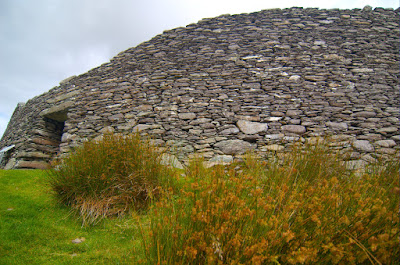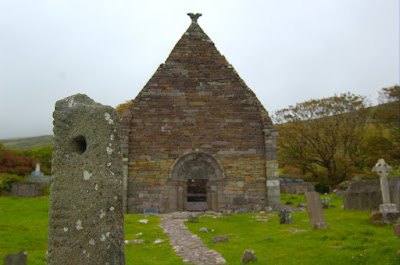About 375 people participated in the event (almost 500 had signed up!?). (There were another 350 people signed up for the shorter sprint-distance event.) We swam 1,500 meters (just under a mile) in the River Liffey, rode bikes in Phoenix park for 40 km (just under 25 miles), and then ran a 10 km (~6 miles) in the park. At the end we got a nice shirt, free ice cream, and a burger.
I have only done one race of that distance before: The Elephant Man Triathlon in September 2008. That was the first race with my then new bike that I still use. The run was the problem though. I had an Achilles tendon inflammation that was still bothering me at that race and had prevented proper run training. It took me 3:20:51 to finish. For today's race, my goal was to beat the three-hour mark. And I did; by 37 seconds.
I'm happy about that. Here is the comparison:
| 2008 | 2011 | ||
|---|---|---|---|
| Swim 1.5 km | 0:31:29 | 0:31:52 | |
| Transition 1 | 0:03:03 | 0:04:41 | |
| Bike 40 km | 1:38:27 | 1:23:38 | |
| Transition 2 | 0:01:49 | 0:02:49 | |
| Run 10 km | 1:06:05 | 0:56:25 | |
| Total | 3:20:51 | 2:59:23 |
Of course, it is difficult to compare races like that, even if the distances are the same. The terrain is different, and the conditions, such as weather and altitude, are never the same. But, shaving 20 minutes off my time three years ago does indicate that I have made some progress.
It's still discouraging though: Almost all the guys in my age group were faster overall.
I used to chalk this up to them having been athletes all their lives, and me only recently started and 90% of the time that I'm not asleep, I'm sitting at a desk staring at a computer screen. (I have plenty of endurance for that ;-)
Now I'm beginning to rethink this attitude. I always thought of myself as an intermediate swimmer, with about half of the people in the pool swimming a little slower than me, and the other half, or a little more than that, swimming faster. Since I've come to Ireland this does not seem to be true anymore. People here are generally more fit and bike faster than me, walk faster, and also swim faster.
And it's not only the slender ones that make me look like a snail. There is a group of guys at the National Aquatic Centre where I train, that sometimes swim in the lane next to me. They do 100 m in less than 1:20 on short intervals. On a good day I can do one of those, if that is all I do that day, and I train for it. The scary part is these guys are portly. I wonder what would happen, if they ever cut back on beer...
The sun took its time to come out this morning. I'm guessing it was below 50 when the race started. That river is cold. Wetsuits were mandatory. I have a sleeveless one because I don't like the restrictive feeling I have in a full suit; this way I can move my arms more freely. But this morning I was wishing for a full suit. As soon as I jumped in, my feet went numb and I didn't regain any sensation until well into the run. When they came back alive, they tried to tell my brain in a few seconds what had happened to them in the last couple of hours. And since my brain didn't do anything about it, they kept sending the same signal over and over.
We went out in waves of about 60 people. In theory that was to make it less chaotic than the 2000-people mass start at a full Ironman. It seemed it was just as bad. Early on I got kicked in the face and my upper lip is still swollen. I was able to draft a few times, but I also seemed to zigzag a lot, despite the organizers having put a floating line in the middle of the river for us to follow upstream, and then downstream on the other side. It took me about to the halfway point before I found a rhythm and could pass a few people.
The bike ride was rolling hills in the park. There are a couple of grades to go up, but noting serious. Going up, the wind was blowing into our faces, but it was not horrendous. The most difficult part was pacing and counting the loops. It was up to us to do five of them and exit the park to get back to the transition area. At the pre-race briefing they said that every year they have a few people who do four or six laps. Once past the park exit, you are not allowed to backtrack to correct your mistake.
The first part of the run was hard. First I couldn't feel my feet, and then later when I could, they hurt. I stopped at one point to check that my socks had not crumpled up in my shoe and were pinching my toes. Everything was fine; I was just getting weird signals from my feet.
The last third was good. I still had energy, my feet were back to their normal pain level during running, and I was able to speed up a little. I even passed some people, although they might have been in a later wave, or doing the sprint distance. Most of the course was on grass or going through woods. I'm not really used to that and twice twisted my ankle on the uneven terrain.
I'm happy with how this race went. I wish I was faster, but given what i can do, I think this one went well and the pacing worked out.
So, now Mike can leave a comment about how this race report is much longer than the one I wrote for the four-times-as-long Ironman ;-) Maybe report lengths are supposed to be inversely proportional to the race distance.







































